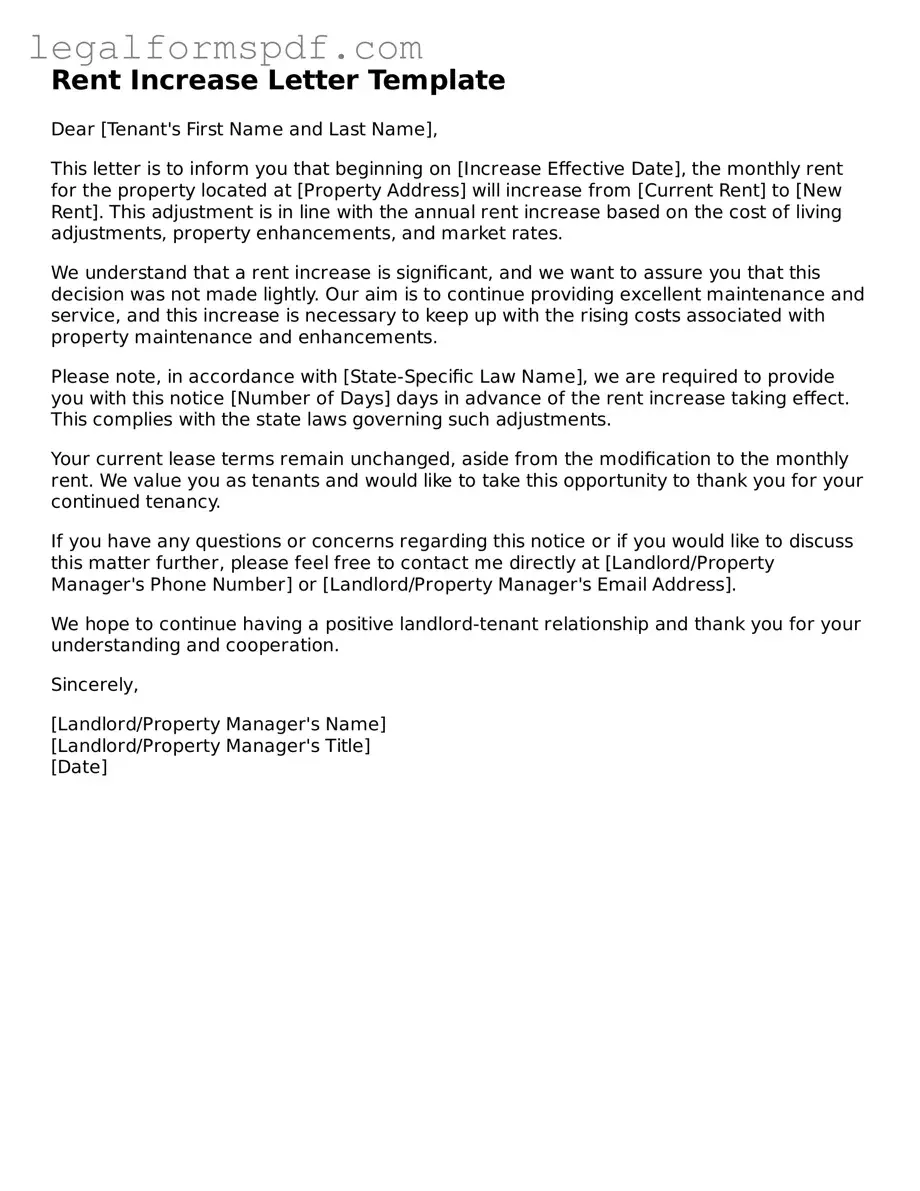What is a Rent Increase Letter?
A Rent Increase Letter is a formal notification from a landlord to a tenant indicating an upcoming increase in rent. This document specifies the amount of the rent increase and the date when the new rent will take effect. It serves to officially inform the tenant, allowing them time to decide whether to agree to the new rent amount and continue the lease or to vacate the property.
When should a Rent Increase Letter be sent?
Landlords must send a Rent Increase Letter well in advance of the date the new rent amount is set to begin. The required notice period varies by state and lease agreement but typically ranges from 30 to 60 days. This advance notice gives tenants sufficient time to consider their options and make an informed decision.
Is there a legal requirement for how much the rent can be increased?
Yes, many states have regulations that limit the percentage by which rent can be increased within a certain period. Additionally, some cities have rent control laws that further restrict increases. Landlords must check local and state laws to ensure their rent increase complies with these regulations before sending a Rent Increase Letter.
What should be included in a Rent Increase Letter?
A Rent Increase Letter should include the tenant's name, the property address, the amount of the current rent, the amount of the rent increase, the total new rent amount, and the effective date of the new rent. It should also include a statement of the tenant's options to accept the new rent or to terminate the lease, as well as any legal disclosures required by local law.
How can a tenant respond to a Rent Increase Letter?
Tenants have several options upon receiving a Rent Increase Letter. They can accept the increase and continue leasing under the new terms, negotiate with the landlord for a smaller increase or different terms, or choose to vacate the property according to the lease agreement and local laws. Tenants should provide their response in writing within the time frame specified in the letter.
What happens if a tenant refuses the rent increase?
If a tenant refuses the rent increase and cannot reach an agreement with the landlord, their lease may not be renewed, and they may be required to vacate the property. The specific outcomes can vary based on the lease terms and local laws, so it’s important for both landlords and tenants to understand their rights and responsibilities in this scenario.
Can a Rent Increase Letter be delivered electronically?
In many jurisdictions, yes, a Rent Increase Letter can be delivered electronically if the lease agreement permits electronic communications between the landlord and the tenant. However, some areas still require a physical letter to be mailed or hand-delivered, so landlords should consult local laws to ensure compliance.
What if a tenant wants to negotiate the rent increase?
Tenants are encouraged to communicate directly with their landlord if they wish to negotiate the proposed rent increase. It’s best to do this in writing and as soon as possible after receiving the Rent Increase Letter. Clear communication and negotiation can often lead to an agreement that is acceptable to both parties.
